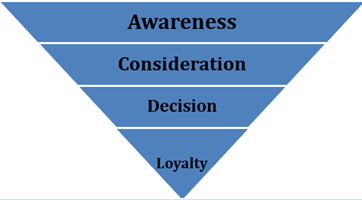
Smart devices, such as phones and home speakers, are getting smarter and smarter such that they can now take voice commands from users. Not only that, as they’re able to perform these commands with precision.
Because of these capabilities, people are finding it convenient to use their smartphones and other voice-enabled devices to help them with web search. Instead of typing their queries on search engines, users are turning to Siri, Alexa, and Google Assistant—the three most popular voice assistants—to get the info, product, or service information that they need using spoken language. This search method is faster too since users can just dictate their commands instead of typing them out.
On the other hand, these changes may pose a challenge for your marketing team since your search engine optimization (SEO) strategy now has to include voice search into the mix. Although SEO for text queries and SEO for voice search are both meant to build a strong online presence for your business, there are certain nuances with voice search especially because search engines have distinct algorithms for it.
Amid these trends, you can tap into your knowledge of the evolving buyer’s journey as well as customer behavior and use relevant insights to help your business stay competitive in online search.
Changes in Consumer Behavior
People’s routines now include using voice-enabled apps. From consuming news content to personal shopping and finding general information on the internet, people are relying on smart speakers and voice-assisted devices to help them with their daily needs.
Considering the statistics from Google and Content Marketing Institute below, it’s safe to say that the voice search technology is fast gaining momentum now more than ever.
- 52% of consumers with a voice-activated speaker at home place the device in a common room, including the family room and living room.
- 62% of people who regularly use a smart speaker are likely to use it to buy something at any given month.
- 48% of smart speaker owners like receiving personalized tips and information from brands to make their everyday lives easier.
- About 70% of queries or requests to the Google Assistant are communicated in natural language instead of the typical keywords that people use in web search.
- 24% of people prefer using a voice assistant than go to a website.
- By 2020, 50% of all searches will be voice-based.
Voice Queries in the Sales Funnel
In any customer-facing situation, you have to remember the significance of using the sales funnel to dictate the strategies that you will use to convert someone into becoming a sale or lead for your business. When you model the sales funnel, you’re focusing on the series of steps or processes that people go through in their customer journey.
Depending on your business model, your sales funnel should include at least four stages.

Through the sales funnel, you get to have an understanding of what type of mindset customers have in each stage. Being aware of this pattern of thinking or behavior helps you map out your marketing strategy.
- Awareness — A customer is experiencing a problem and conducting research to understand the nature of the problem. At this stage, the customer’s questions revolve around the problem.
- Consideration — The customer has identified the problem and is now looking for available options or solutions.
- Decision — The customer has come up with a strategy to solve the problem. This is also the point where the customer narrows down the possible products or services that could best solve the problem.
- Loyalty — The customer has developed a preference for a particular kind of brand, idea, or method and continues to engage with it.
The sales funnel can also serve as your guide on what queries people are using throughout their buying process and, consequently, help you tailor your content or approach accordingly. Along the way, you might find gaps in your sales funnel, which may be giving customers a reason not to convert. You should then tweak your tactics to make sure that you’re delivering the right message at the right time to your audience.
Here are some examples of questions that customers might have as they move from one stage of the sales funnel to another (using “tea” as an example):
Awareness: What are the benefits of drinking tea?
Consideration: How do green tea and jasmine tea compare with one another based on their medicinal properties?
Decision: How many tea bags should I use to make one liter of tea?
Loyalty: What snacks or delicacies go best with tea?
If your business involves manufacturing or selling tea, you’ll want to make sure that your content strategy includes information on the questions listed above as well as all possible topics that might be useful for tea drinkers.
In addition, you should spend time optimizing your content pieces for voice search. These factors play a role in how Google and other search engines may rank your brand on voice search:
1. Length. Google recommends an average of 29 words when framing answers for voice search.
2. Readability. Search engines prefer content with a 9th grade comprehension level because it is easier to understand than upper grade levels.
3. Word count. Google extracts voice search results from long-form content where the average word count per page is 2,312.
4. Featured snippet. Web pages that appear as a featured snippet represent 40.7% of voice search answers in search engine results pages (SERPs).
5. Structured data. Pages that use schema or structured data show on SERPs at a rate of 36.4%.
How to Do Keyword Research in Voice Search
Voice technologies are changing the way that customers are searching the web. In voice search, people use more conversational language and long-tail questions since they are asking more specific questions unlike in text search where the questions are more generalized.
Based on these evolving search methods, how you use keywords to make your business visible on SERPs likewise needs a different approach.
Here are some of the best practices in keyword research for voice search:
- Target long-tail keywords. You can use question phrases to match the way that users form their queries.
- Put keywords in your headers or sub-headers. This will help your content provide context to users’ voice queries and appear as a possible answer to a voice search.
- Include function or filler words into your keywords, so they mimic how people speak in casual conversations.
- Add steps from the sales funnel into your keyword research. This means plotting possible questions for every stage of the buying process.
- Identify keywords based on usage along the buyer’s journey and map these into your content assets. For example, you should include keywords that people in the consideration stage use to make comparisons, while content that targets customers in the decision stage might include keywords that are related to pricing or cost.
Voice Queries Based on Intent
Another helpful strategy in developing and optimizing your content for voice search is to match it with search intent. Search intent pertains to what searchers want to know as they dictate their queries into their device. When you know the searchers’ intent, you can then create a piece of content that matches exactly with that desire.
Search intent can be grouped into four different categories: informational, transactional, navigational, and commercial investigative.
- As the name implies, informational searches are made by people who are looking for information. People with this type of search intent have a specific question or want to know more about a particular subject matter.
What type of content should you be producing for this intent:blogs, how-to guides, infographics, newsletters
- Transactional searches are used by people who intend to buy something on the internet. They’re using the web to search for the best or most suitable deals.
What type of content should you be producing for this intent: FAQs, video demo, product information or comparisons, reviews, testimonials, product listing, pricing information
- Navigational searches help people to get to a specific destination, such as a website or a physical store.
What type of content should you be producing for this intent: corporate profile, press releases, company news or updates
- Commercial investigative searches are geared toward the research process among customers. These searches are meant to help buyers make an informed decision about a purchase they’re planning to make.
What type of content should you be producing for this intent: case studies, whitepapers, e-books
Using Search Intent to Build the Buyer’s Journey
It’s important to note that there’s a relationship between the buyer’s journey and search intent. Customers at the awareness stage will likely use informational keywords, navigational keywords at the consideration stage, and transactional keywords at the decision stage.
Thus, breaking down the search intent is helpful for keyword research, too. When you know the reasons behind a customer’s specific search, you can match your keywords with the buyer’s intent and develop relevant content that cuts across the customer journey. The goal is to make your business visible and accessible through voice search wherever the customer is in the sales funnel.
Here are some things that can help you in mapping keywords and organizing them based on search intent and customer journey:
- Interpret the kind of questions that users ask. You can look for signal words to determine their degree or kind of intent. “Who” and “What” questions may signify that users are in the awareness or consideration stage, while “Where” and “When” questions may be signs that they’re ready to buy.
- Brainstorm commonly used keywords for each stage of the customer journey. For example, a buyer searching for product comparisons might include the search phrase “pros and cons” in their search, while buyers at the decision stage might ask using “discount offers” as keywords.
- Use topic clustering. This refers to building a collection of content that centers around a main topic to improve your brand visibility on search as well as establish your industry authority.
Through topic clustering, you can target a variety of keywords, especially long-tail phrases that cater more to voice searches.
To implement topic clustering, you should come up with:
A pillar page — This covers the main topic on a single page with smaller cluster topics that link to it. Here, you can focus on the awareness or consideration stage of the funnel.
A cluster page —This page contains more information about the main topic on your pillar page to help your prospect during the awareness stage.
A target or landing page — This contains keywords or phrases about a specific product or service. Your focus here is on the decision-making process.
The Customer’s Journey and Behavior in the Age of Voice Search
The emerging
voice search technology is shaping the buyer’s journey and customer behavior in
new ways. Through voice search, customers are able to find answers to their
questions in a faster and more convenient fashion.
At the rate voice search is growing, it won’t be long before it becomes the
norm in online search. Instead of waiting for voice search to go full blast,
you could take the lead in making sure that your business is well prepared and
responsive to this shift.
You can start by revisiting your SEO and content marketing strategies to gain fresh insights on what customers are searching, with special focus on their intent and how they’re expressing this in their search. Don’t forget to keep track of new algorithms from Google and other search engines as following these can help you optimize your website and your content pieces, so you’ll appear as a top response on voice search.
With these strategies, you can position your brand as experts in responding to the voice search revolution to drive traffic to your site, establish thought leadership, and engage users all throughout their buying journey.